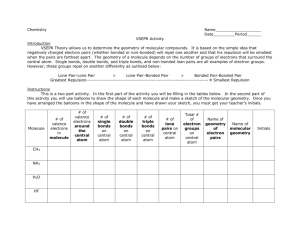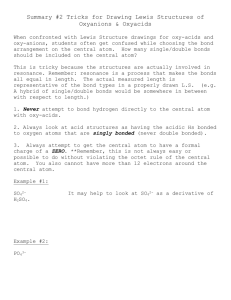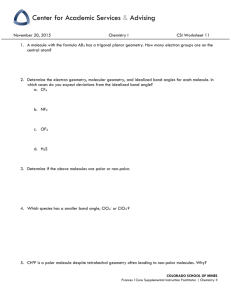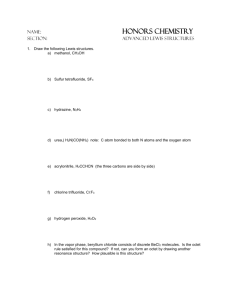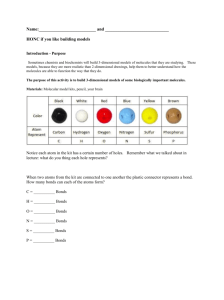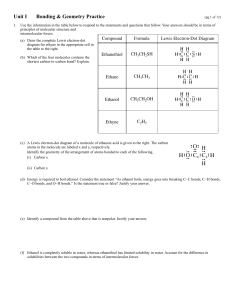The Geometry of Atoms in a Molecule
advertisement
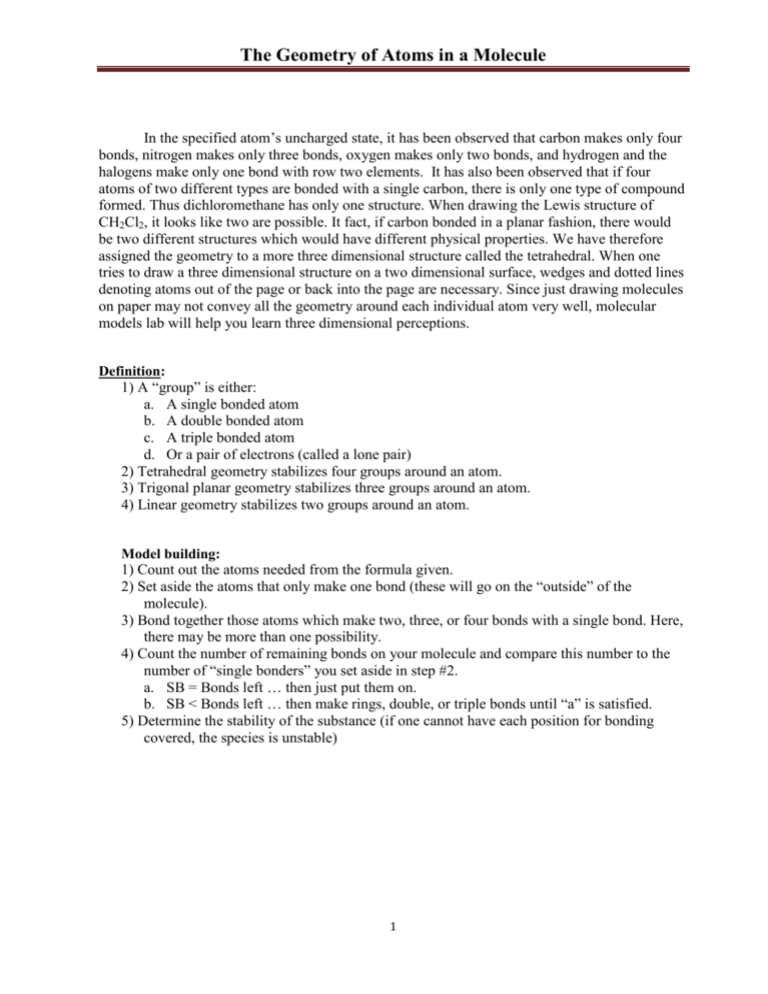
The Geometry of Atoms in a Molecule In the specified atom’s uncharged state, it has been observed that carbon makes only four bonds, nitrogen makes only three bonds, oxygen makes only two bonds, and hydrogen and the halogens make only one bond with row two elements. It has also been observed that if four atoms of two different types are bonded with a single carbon, there is only one type of compound formed. Thus dichloromethane has only one structure. When drawing the Lewis structure of CH2Cl2, it looks like two are possible. It fact, if carbon bonded in a planar fashion, there would be two different structures which would have different physical properties. We have therefore assigned the geometry to a more three dimensional structure called the tetrahedral. When one tries to draw a three dimensional structure on a two dimensional surface, wedges and dotted lines denoting atoms out of the page or back into the page are necessary. Since just drawing molecules on paper may not convey all the geometry around each individual atom very well, molecular models lab will help you learn three dimensional perceptions. Definition: 1) A “group” is either: a. A single bonded atom b. A double bonded atom c. A triple bonded atom d. Or a pair of electrons (called a lone pair) 2) Tetrahedral geometry stabilizes four groups around an atom. 3) Trigonal planar geometry stabilizes three groups around an atom. 4) Linear geometry stabilizes two groups around an atom. Model building: 1) Count out the atoms needed from the formula given. 2) Set aside the atoms that only make one bond (these will go on the “outside” of the molecule). 3) Bond together those atoms which make two, three, or four bonds with a single bond. Here, there may be more than one possibility. 4) Count the number of remaining bonds on your molecule and compare this number to the number of “single bonders” you set aside in step #2. a. SB = Bonds left … then just put them on. b. SB < Bonds left … then make rings, double, or triple bonds until “a” is satisfied. 5) Determine the stability of the substance (if one cannot have each position for bonding covered, the species is unstable) 1 The Geometry of Atoms in a Molecule The formula of molecules/ions to do: CH4 CH2 Cl2 + H3O CH2 NH3 H2O2 N2 C2H4 C2H2Br2 CO2 SCN HNO3 C2H4Cl2 PCl3 HF CO SF2 C3H6O C3H7N C2H4O2 C2H4O SiF4 C3H7N CH4 S CO3 HCO2 CH4O + NH4 C2H2 NO3 H3O C2H6O -2 SO4 C3H6O HNO2 H2O SO2 Procedure: 1. For each formula given, do the following in some organized way in your lab notebook: 2. Draw the Lewis structure of the model you made with the maximum number of atoms in the plan of the paper (arrange the model this way before attempting this). Represent the atoms not in the plane of the paper as wedges or dotted lines. 3. Determine the geometry around each atom that makes two, three, or four bonds. 4. Using electronegativity values found in your book, determine which bonds in your molecule are polar. 5. Using the ideas of geometry (part 2) and polarity (part 3) determine if the molecule itself is polar. Determine if there is another molecule you can make with the same formula … an isomer! If one or more isomers exist, do steps 1 through 4 for one additional isomer. (Not more than 2 isomers for each formula!) 2
